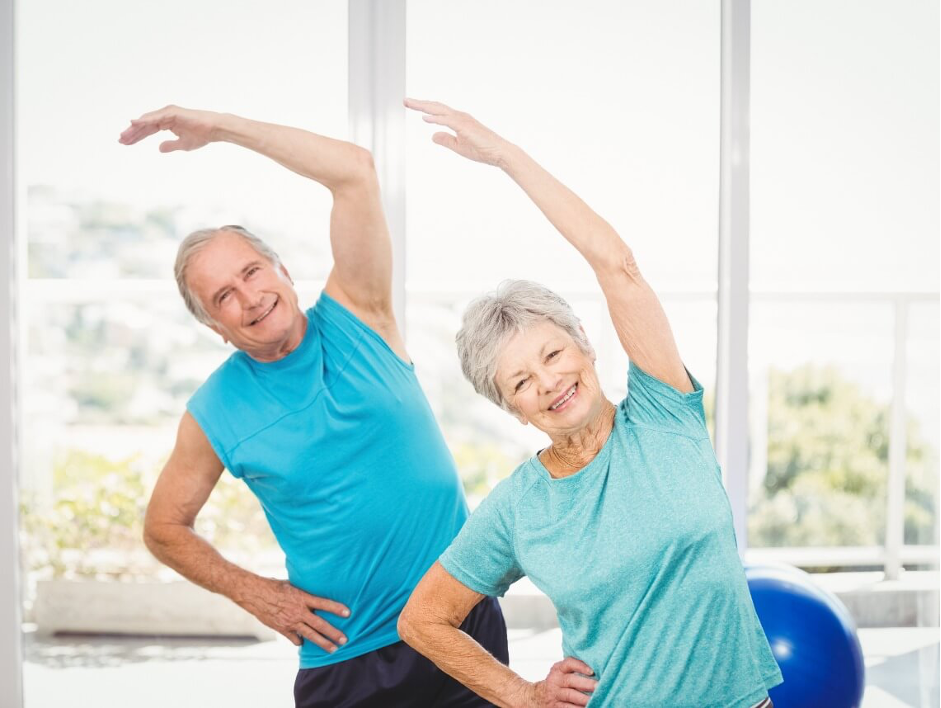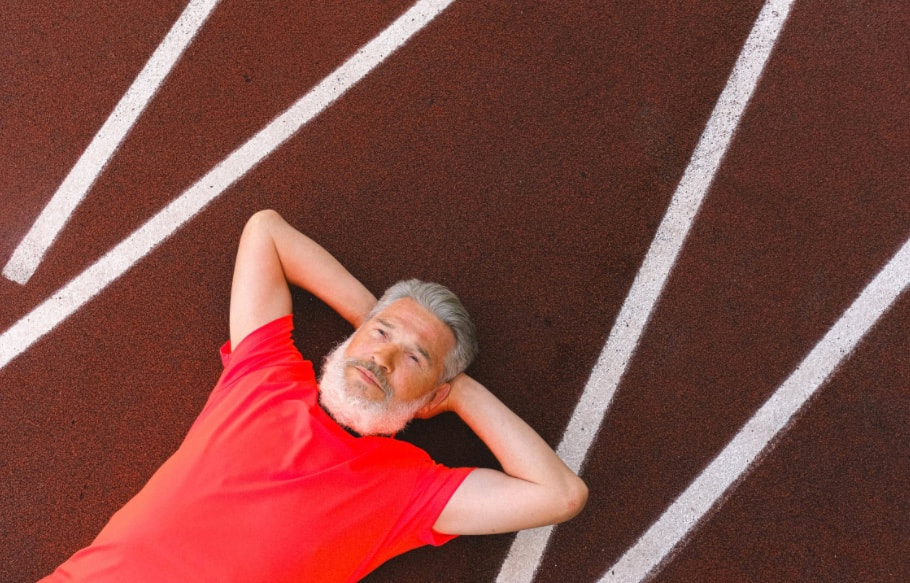The Surprising Link Between Your Gut Biome and Your Motivation to ExerciseStaying active and motivated to exercise can become increasingly challenging as we age. However, recent research suggests gut bacteria may play a much bigger role in getting us going than previously thought
A recent study discovered that the key to unlocking peak performance and motivation may lie in your gut! Two superstar bacteria, Eubacterium rectale and Coprococcus eutactus, have been identified as producing fatty acid amides (FAAs). These powerful little compounds stimulate the CB1 endocannabinoid receptors in your gut, leading to increased dopamine release in the motivation-controlling regions of your brain. And the best part? You can boost the levels of these bacteria in your gut simply by eating a diet rich in fibre, probiotics, and other gut-healthy foods. But it's not just about the science - it's about results!  Photo by Quang Tri NGUYEN on Unsplash Bad oral health increases your all-mortality riskAs a recent convert to using an electric toothbrush full-time, I was surprised to read recently in the New York Times, in bold, that "You don't need an electric toothbrush" in their article "What Dentists Wish You Knew".
I'm a recent convert to using an electric toothbrush full-time. I've flirted with them in the past but found them more inconvenient than using a simple everyday manual brush. As a convert, I wished I had been using one for the last 20 years, as I now see more debris being loosened, and my gums feel much better. My experience with an electric toothbrush over the last 6 months made me wonder why the NYT would advocate against powered toothbrushes when it could have been neutral, and perhaps even in favour. I wanted to know what independent research has concluded about the benefits or otherwise of electric toothbrushing and dental hygiene. Here's what I found. Strong evidence supports the use of powered toothbrushes for better oral health, i.e., slowing the progression of periodontal diseases such as gingivitis. Better oral health delays progressive diseases of aging. In fact, older adults with tooth loss have a higher risk of cognitive impairment and dementia, with increasing risk with each missing tooth, according to a study published in the Journal of the American Medical Directors Association. Source: nia.nih.gov How to find your fulfilling life in a world of endless possibilitiesIn a world filled with endless possibilities, it's hard to know what direction to take with your life. So how do we find meaning in life? It's a question that has perplexed philosophers and thinkers for centuries and is still being debated today. What psychological theory describes how the world is interpreted?Psychological theories help to explain how people interpret the world around them. They provide a framework for understanding how people think, feel, and behave.
There are many different psychological theories, each with its own unique perspective. Some of the most famous psychological ideas include cognitive dissonance theory, social learning theory, and attachment theory. These theories have contributed to understanding how people interpret the world around them. For example, cognitive dissonance theory helps to explain why people sometimes hold contradictory beliefs. Social learning theory explains how people learn by observing others. Attachment theory helps to explain how our early experiences with caregivers can shape our later relationships. Do pistachios help you sleep?Everyone knows that a big glass of milk before bed helps you sleep. But what about pistachios? These small nuts are packed with nutrients, including protein and various minerals. A recent study suggests that eating pistachios before bed may help you fall asleep faster and stay asleep longer. Pistachios have been used as medicine for centuries. But why would eating pistachios help you sleep? The answer lies in the brain. How to perform an ab wheel workout properly for beginners, men, women & seniorsAb wheel rollouts (or ab rolling) are not only one of the best ways to strengthen your abs, but they will also strengthen our entire body.
People often think performing sit-ups is the best way to develop their abdominal muscles. Still, ab rolls are better than sit-ups for developing muscular endurance and overall fitness when performed correctly. The ab wheel works better than traditional abdominal exercises such as crunches because it trains our core muscles in a different way. It can look super easy but don't be deceived. Rollouts are challenging because they take much more coordination and control than a typical ab exercise. You must squeeze your butt, engage core muscles, and keep your hips and shoulder blades stable to see progress. The ab wheel isn't just about building strength; it also helps develop flexibility. Ab wheel rollouts primarily engages two of the most important muscles of the core: the rectus abdominis ("6-pack"), and the transverse abdominis, which are the core muscles surrounding our belly button and stabilising our torso. Kickstart your next 50 years with these six health tips
GUEST POST by Elizabeth Elaine Reed* Elly writes health articles for sites such as eleven-magazine.com and fitness-savvy.co.uk. Click here for disclosure statement.
Did you just enter your 50s? Can you say with confidence and truth that your health is the same as it was in your prime years?
As men age, their health needs also change. They are more likely to have chronic conditions such as heart disease, diabetes, and high blood pressure. They also may have problems with their vision and hearing. But, getting older doesn't mean you're destined for an unhealthy future. You can still do various things to stay active, fit, full of energy, and healthy past your prime years. To stay healthy, you need to pay attention to your lifestyle choices and make sure you are getting the screenings and vaccinations you need. In addition, you can also do the following: consider if multivitamins are for you, cut back on salt, limit your alcohol consumption, exercise regularly, get regular check-ups, and ensure adequate sleep. Variety is the key to exercising for seniorsGUEST POST by Juan Carlos Gonzalez* This post may contain affiliate links. The author may earn a small commission for any purchases made through these links. Click here for the disclosure statement. No payment has been made to me or will be received by me - as the publisher of this blog - for this post - Walter Adamson. We know that physical activity is necessary to maintain good health in our later years, but less than a third of Americans meet the recommended levels of physical activity.
Heart disease, osteoporosis, depression and diabetes are common diseases among older adults and are often deadly. Fortunately, adopting a more active lifestyle can contribute to the prevention of these diseases, or reduce the unpleasant symptoms of these diseases if you already have them. If you are at risk for disease, exercise may be the key to warding off an unpleasant condition. Variety is the key to finding suitable exercises for seniors. All ages, but especially seniors, should focus on a mix of strength and mobility exercises as well as balance and aerobic activities. However, it boils down to this - the best exercises for seniors are those they enjoy and can do regularly. GUEST POST by Thomas Nemel* This blog post may contain affiliate links. As an Amazon and Rewardstyle affiliate, the author may earn a small commission for any purchases made through these links. Click here for the disclaimer statement. Effective training is a combination of three classical processes: workout, rest, and recovery. When you train hard, you need enough time to rest, usually meaning good sleep, and also to allow a muscle recovery period. Otherwise, working too hard can lead to poor results. And what is worse, it may lead to overtraining or, according to official classification, Overtraining Syndrome (OTS). Some athletes and trainers may also call it “burnout”, “overwork”, and “staleness.” Long-term effects of overtraining can spoil life for many months and even years, and need detailed attention and training plan correction. Symptoms of overtrainingHow to look stronger, prouder and use less effortRunning slumped is something that I see often. The people running slumped look tired. Here's the irony, when you slump it will make you more tired.
Here are three tips to get you looking stronger, prouder, and be able to sustain your running with less effort. I've been running daily for a year on our local trails - it's been a fantastic daily break during our nearly year of working from home. When a fluid runner goes by, it inspires me, but when a slumped runner struggles towards me I want them to hold their head up, breathe more deeply, and find their rhythm. And even better if at stage 5 of ripeness ... Photo by Charlotte Harrison on Unsplash Who would have thought that bananas promote our gut health, helping grow beneficial bacteria that ultimately strengthens our bones and delays neural degeneration in our brain?
It all starts with inulin, which is in bananas and which begins digestion only when it reaches our gut. |
ChoicesSince I was diagnosed at 50 with Type 2 diabetes I've been learning how to do bone-building fitness training which lowers my age. You can too. It's your choice. Walter Categories
All
Archives
May 2023
|








 RSS Feed
RSS Feed



